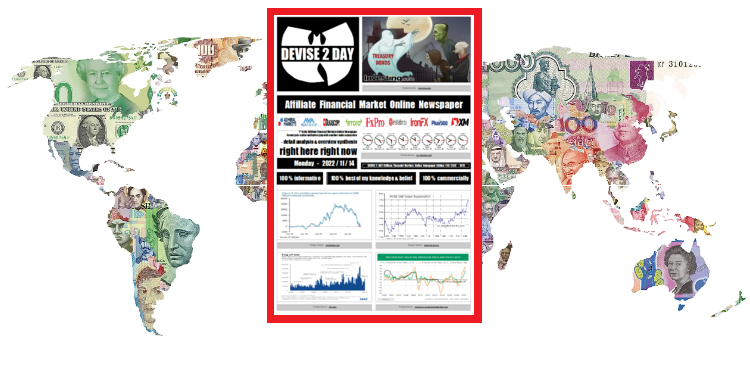
2022/11/14 (110) Technical Analysis – XETR-DB1 & UKOIL
China Worries Weigh On Bullish Oil Price Action
– But That Is Taken Into Account In Our Short UKOIL 4XSetUp
OPEC Cuts Production – Lowered Demand Expectations
OPEC Cut Production By 210,000 Barrels Per Day In October And Demand Expectations Are Also Falling
The entire OPEC+ group had agreed to cut oil production by 100,000 barrels a day in October. As OPEC reports in its monthly report today, it reduced production in October alone by 210,000 barrels per tang to 29.49 million barrels per day. Saudi Arabia alone cut 149,000 barrels a day. A significant amount also cut Angola at -78,000. Nigeria has increased its production by 33,000 barrels per day. Aside from October production, OPEC’s outlook for supply and demand is also important. Global demand for oil is expected to increase by 2.5 million barrels per day in 2022 as a whole, a downward revision of 0.1 million. Oil demand for the third and fourth quarters of 2022 was revised downwards due to the corona restrictions in China, but also due to geopolitical uncertainties and less economic activity. For 2023, OPEC has revised down its forecast for oil demand growth by 0.1 million barrels per day to 2.2 million. Non-OPEC oil supply will increase by 1.9 million barrels per day for the full year 2022, they said, after being revised down slightly by 30,000 barrels per day from the last estimate. The US, Canada, Guyana, China and Brazil are expected to be the main drivers of supply growth in 2022, while Norway and Thailand will see the biggest declines. For 2023, the forecast for non-OPEC supply growth remains largely unchanged at 1.5 mb/d. The main drivers are likely to be the US, Norway, Brazil, Canada, Kazakhstan and Guyana, while oil production is likely to fall in Russia and Mexico in particular. Nonetheless, significant uncertainties remain regarding the potential of US shale oil production and the geopolitical situation in Eastern Europe, including the threat of EU sanctions against Russian oil imports. OPEC production of NGL and unconventional liquids is projected to increase by 0.1 million barrels per day to an average of 5.39 mb/d in 2022 and by 50 t/d to an average of 5.44 in 2023, according to OPEC forecasts mb/d increase.
OPEC Production In November Is Set To Decline Significantly Further After The OPEC+ Group Cut Its Production Target By 2 Million Bpd
The crude oil production of all 13 OPEC members, including those exempt from the OPEC+ pact – Venezuela, Iran, and Libya – averaged 29.49 million bpd in October, according to secondary sources in the organization’s closely-watched Monthly Oil Market Report (MOMR) published on Monday.Saudi Arabia, the de facto leader of OPEC and its top producer, saw its production decline by 149,000 bpd to average 10.838 million bpd last month, as OPEC+ decided in early September to reverse a 100,000 bpd increase in target oil production, which was only intended for the month of September. Saudi Arabia’s production dropped the most among OPEC members and was below the targeted production level of 11.004 million bpd per the schedule the OPEC+ meeting had adopted. The Kingdom self-reported higher production for October than secondary sources’ estimates, at 10.957 million bpd, down by 84,000 bpd compared to September. Production in Angola saw the second-steepest drop in OPEC producers in October, but it wasn’t the result of a conscious reduction since the African producer has been lagging behind its quota for many months. Angola’s crude oil production fell by 78,000 bpd to 1.067 million bpd in October, according to OPEC’s secondary sources. Angola’s target, however, is much higher, at 1.525 million bpd, meaning that the country was nearly 500,000 bpd below target. Over the coming months, OPEC’s production is set to decline further after the OPEC+ alliance decided to reduce its collective target by 2 million bpd for November. Although the actual cut is expected to be around half that number, at 1.1 million bpd, it still is the biggest cut since the record production reduction announced in April 2020 when oil demand plunged at the start of the pandemic.
China Worries Weigh On Oil Price Action – But That Is Taken Into Account In This 4XSetUp
Oil prices give way at the start of the new trading week. The background is the fear of new lockdown measures in China – and a reduced demand forecast by Opec. Many colleagues address this issue. And I don’t want to belittle the Chinese demand for black gold either. let alone ignore it. That’s why I always work with stop prices – like 100 USD in this case. Because if the demand from China comes back – and it will come – then it’s possible that the oil price will rise above 100 USD again! And then? I don’t think there is as much upside potential for bulls as there was at the beginning of 2022, for example, as Russia launched a military attack on Ukraine. And that, at least in my opinion, is the crucial point! Since I’m not assuming a break-out of up to USD 120 and even more, like back then just before the start of the war – on the contrary! If you follow my 4XSetUps scenarios carefully on a regular basis, then you too will realize that the Ukraine is working militarily on its counter-offensive – and possibly even faster than we can imagine, it will be able to control its entire national territory again, from Kiev, in a self-determined manner. And that is what this short 4XSetUp Trading Capability aims for in the long term. So don’t lose your nerve – and pull the ripcord at the latest at 100 USD in the UKOIL. And then also in 2023, if it has to be…
US And Its G7 Allies Continue To Contemplate The Implementation Of A Price Cap On Russia’s Oil Exports.
„The cap is planned to take effect December 5 with respect to seaborne oil shipments and on February 5 with respect to oil products. It has been reported that the G7 allies have agreed to setting a fixed price on Russia oil exports in the range of the mid-$60s. The plan also includes the ban on western oil transport services (insurance, finance and brokering) for oil cargoes priced above the fixed price.“, wrote John E. Paisie, President and/or forunder of Stratas Advisors, in his weekly outlook on Sunday. Which he rounded off with the following words: „…, the biggest factor that is undermining the price cap is that major importers of crude oil, such as India and China, cannot afford to put their economies in jeopardy by risking the potential of not being able to access their required imports of oil. Consequently, we are still holding to our view that price cap and other sanctions will have limited impact on Russian oil exports and that Russia’s oil production will average only around 400,000 b/d less in 2023 than in 2022.“
However, Back To Todays Price Action – Where Crude Oil Falls More Than 3%
WTI crude futures fell more than 3% to below $86 per barrel on Monday, a dramatic reversal from their daily highs of almost $90 per barrel, as a stronger dollar and uncertainty about a China reopening kept investors on edge. China’s National Health Commission has recently eased some coronavirus-induced measures on the world’s top oil imported, but rising coronavirus cases over the weekend pushed back the idea of a broader and swift reopening.
good morning, good day, and/or good night
at whatever time, wherever you are !
right here right now :


















